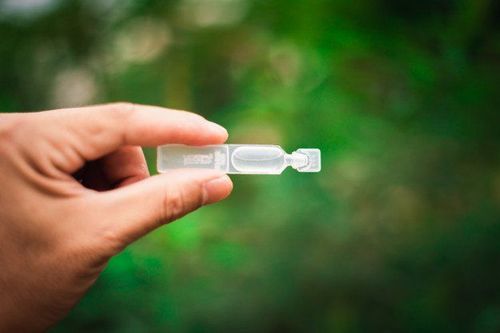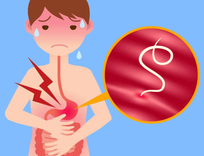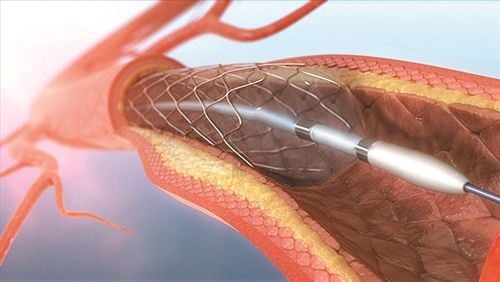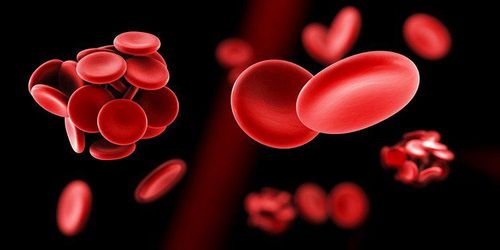This article is professionally consulted by Dr. Bùi Thị Hà, Specialist level I, Pediatrician – neonatologist – Department of Pediatrics and Neonatology – Vinmec Hạ Long International Hospital.
The newborn’s eyes with red spots or blood clots may have subconjunctival hemorrhages (Ruptured small blood vessels in the eye). These occur due to the rupture of small blood vessels after mechanical trauma during the birth process or sometimes following episodes of excessive crying, coughing, or vomiting. However, some cases occur without any clear reasons. Subconjunctival hemorrhage lesions typically resolve on their own within 1 – 3 weeks without any treatment and usually do not affect the baby’s vision. Therefore, partners should not be overly worried when detecting red spots or blood clots in their baby’s eyes.
1. Why do the newborn’s eyes have red spots?
Many partners feel worried when noticing a red spot in their baby’s eyes and wonder whether this condition could harm the baby’s vision or overall health. The red spots or even blood clots within the newborn’s eyes are typical signs of subconjunctival hemorrhage. This condition is quite common and can occur at any age.
In adults, it often happens due to excessive coughing. However, any factor that causes a sudden change in pressure can rupture blood vessels and lead to bleeding. So, in some cases, subconjunctival hemorrhage can be a warning sign of hypertension.
Although subconjunctival hemorrhage can occur at any age, it is quite common in newborns, especially babies having trauma when giving birth. Strong and constant change pressure during childbirth can cause rupture of blood vessels in the newborn’s eyes.
The pressure that newborns suffer comes from uterine contractions during labor and usually leads to subconjunctival hemorrhage. This comes due to the increase in intravascular pressure to the maximum point, causing blood vessels to break. Overweight babies are at a higher risk of experiencing this type of injury.
Subconjunctival hemorrhage may occur in labor when assistive devices are used to deliver the baby more quickly, especially in cases where the baby is stuck or has fetal distress. The most commonly used birth-supporting devices for vaginal delivery (normal delivery) are forceps or vacuum extractors.

2. Symptoms of subconjunctival hemorrhages in newborns
The newborn’s eyes with red spots or blood clots are prominent signs and are the first symptoms cause partners can detect easily. The simple subconjunctival hemorrhage cases cannot lead to pain or other complications.
If the baby is diagnosed with subconjunctival hemorrhages, the baby’s eyes will be examined under magnification. The presence of blood clots beneath the conjunctiva, connecting to the white layer of the cornea, is a single diagnosis criterion. However, subconjunctival hemorrhages can be a single sign or a warning symptom of intracranial hemorrhage (bleeding in the brain) that occurs due to trauma in labor. This is a serious condition that increases the risk of epilepsy and other complications resulting from brain cell hypoxia.
3. Treatment methods for subconjunctival hemorrhages
Single subconjunctival hemorrhage lesions in newborns usually do not cause any complications and can resolve on their own in several weeks without any treatment methods. The best thing partners should do is to monitor their baby while the red spots or blood clots are healing. During the recovery process, the newborn’s eyes can feel itchy and should be treated with eye drops.

Although this disease can be resolved simply on its own, partners should still take their baby to a medical center for disease progressive monitoring and ensure that severe complications such as intracranial hemorrhage, do not occur. In rare serious cases, subconjunctival hemorrhages can lead to irreversible eye damage. The choice of treatment in these cases will depend on the severity of each patient’s condition.
If the newborn shows warning signs of severe complications, partners should consult with an ophthalmologist as soon as possible. These symptoms consist of:
- Signs of eye infection, such as swollen eyelids, red eyes, or pus discharge.
- There are blood clots in the white of the eye or other sites except conjunctiva.
- Experience vision-associated problems
- Eye pain at moderate to severe level
- The area of subconjunctival hemorrhage is more widespread.
Fortunately, newborns with subconjunctival hemorrhages are quite common and are not usually life-threatening. Partners always monitor the disease progression of their babies to detect abnormal signs as soon as possible. The recovery time average lasts from 1 to 2 weeks, depending on each newborn.
Please dial HOTLINE for more information or register for an appointment HERE. Download MyVinmec app to make appointments faster and to manage your bookings easily.
References: birthinjuryhelpcenter.org, cerebralpalsysymptoms.com













